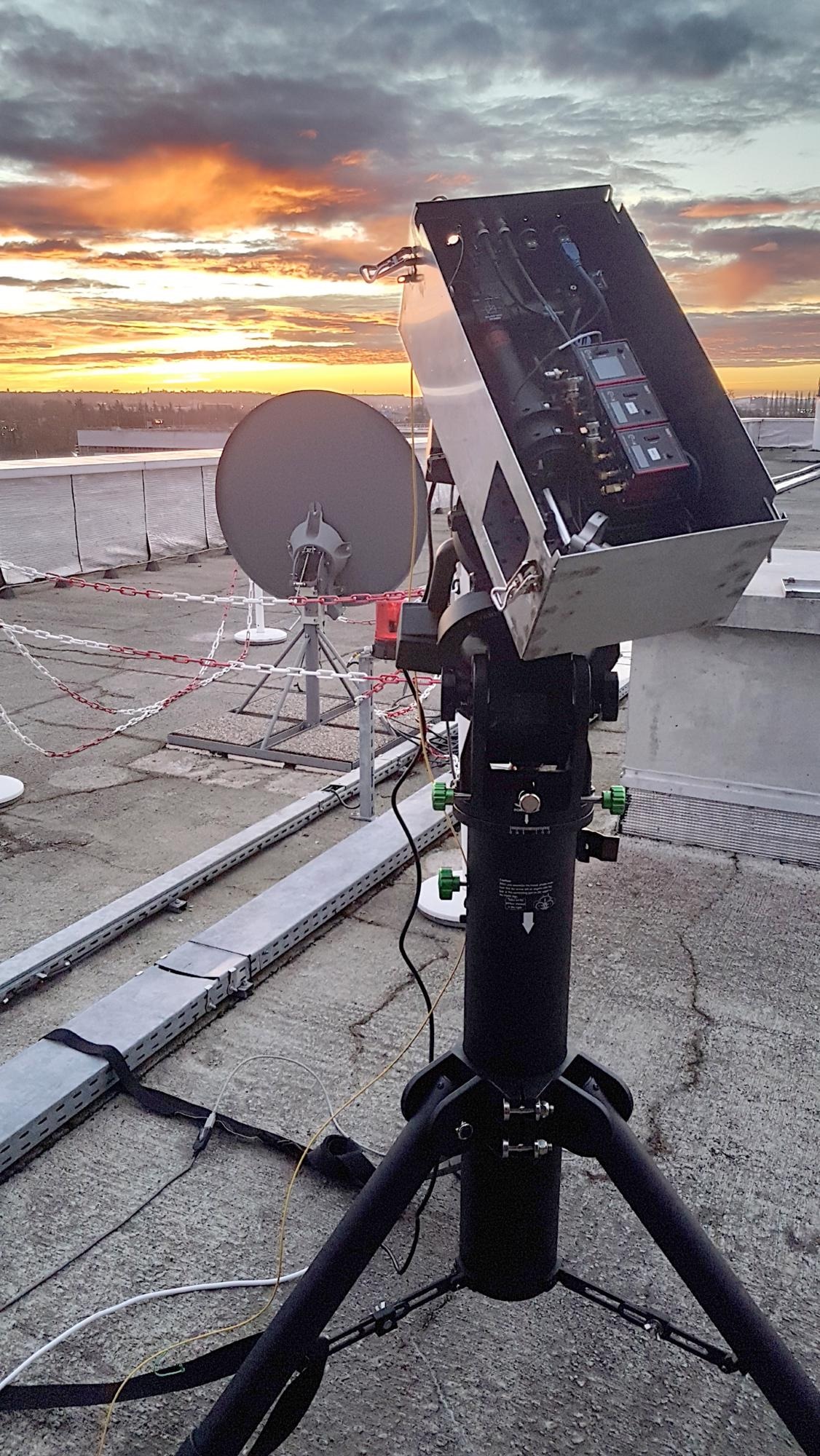Jan 25 2021
Researchers from the International Centre for Radio Astronomy Research (ICRAR) and The University of Western Australia (UWA) have achieved a new world record for the most stable laser signal transmission through the atmosphere.
 One of the self-guiding optical terminals on its telescope mount on the roof of a building at the CNES campus in Toulouse. Image Credit: ICRAR/UWA.
One of the self-guiding optical terminals on its telescope mount on the roof of a building at the CNES campus in Toulouse. Image Credit: ICRAR/UWA.
Australian researchers collaborated with researchers from the French National Centre for Space Studies (CNES) and the French metrology lab Systèmes de Référence Temps-Espace (SYRTE) at Paris Observatory for the study, which was published recently in the Nature Communications journal.
The group combined the Australian researchers’ “phase stabilisation” technology with sophisticated self-guiding optical terminals to set the world record for the most stable transmission of a laser signal.
When used in combination, both the technologies enabled laser signals to be transmitted from one point to the other without any interference from the atmosphere. According to the lead author of the study Benjamin Dix-Matthews, who is a PhD student at ICRAR and UWA, the technique effectively removes atmospheric turbulence.
We can correct for atmospheric turbulence in 3D, that is, left-right, up-down and, critically, along the line of flight. It’s as if the moving atmosphere has been removed and doesn’t exist. It allows us to send highly-stable laser signals through the atmosphere while retaining the quality of the original signal.
Benjamin Dix-Matthews, PhD Student, ICRAR-UWA
The outcome is the most accurate method in the world to compare the flow of time between two individual locations with the help of a laser system transmitted through the atmosphere.
Dr Sascha Schediwy, a senior researcher at ICRAR-UWA, the study has fascinating applications.
If you have one of these optical terminals on the ground and another on a satellite in space, then you can start to explore fundamental physics. Everything from testing Einstein’s theory of general relativity more precisely than ever before, to discovering if fundamental physical constants change over time.
Dr Sascha Schediwy, Senior Researcher, ICRAR-UWA
The accurate measurements of the technology could also find practical applications in earth science and geophysics.
“For instance, this technology could improve satellite-based studies of how the water table changes over time, or to look for ore deposits underground,” added Dr Schediwy.
There are additional prospective advantages for optical communications, which is an emerging field that involves using light to transfer information. Optical communications can ensure secure transmission of data between satellites and Earth, with considerably higher data rates compared to existing radio communications.
Our technology could help us increase the data rate from satellites to ground by orders of magnitude. The next generation of big data-gathering satellites would be able to get critical information to the ground faster.
Dr Sascha Schediwy, Senior Researcher, ICRAR-UWA
The phase stabilization technology using which this record-setting link was established was originally created to synchronize incoming signals for the Square Kilometre Array telescopes. The multi-billion-dollar telescopes are planned to be set up in South Africa and Western Australia.
Journal Reference:
Dix-Matthews, B. P., et al. (2021) Point-to-point stabilized optical frequency transfer with active optics. Nature Communications. doi.org/10.1038/s41467-020-20591-5.